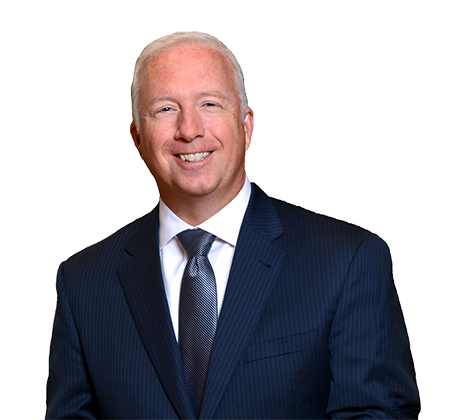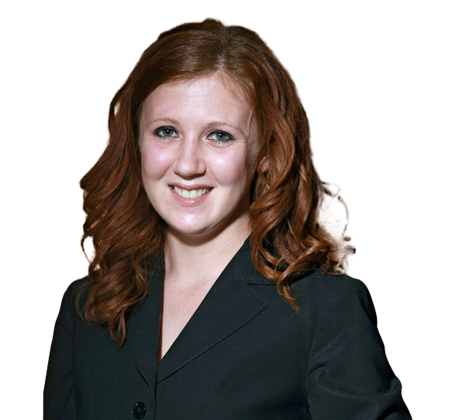Bringing the Year to a Close: The 2012 Fall National Meeting of the National Association of Insurance Commissioners
The National Association of Insurance Commissioners (the "NAIC") held its 2012 Fall National Meeting from November 29 to December 2, 2012 in National Harbor, Maryland. This was the last National Meeting for the year and, as in the ordinary course, current officers for the NAIC stepped down, new officers were appointed, and all committees set out their potential charges for 2013. Catastrophe issues were among the notable topics of discussion, especially in light of Superstorm Sandy and its devastating aftermath on the east coast less than a month earlier. The following is an update on several key issues which were discussed during the 2012 Fall National Meeting, a number of which we highlighted in our report following the 2012 Summer National Meeting.
New Subgroup to Vet Accounting and Reporting of Quota Share Reinsurance Agreements in Fact-Gathering Stage
As we noted following the 2012 Summer NAIC National Meeting, perceived apprehension among regulators that certain quota share reinsurance agreements were not, in fact, transferring significant risk led to the formation of a new subgroup to vet the accounting and reporting requirements for such reinsurance agreements. In August, the Reinsurance Task Force established this subgroup to, inter alia, review accounting and reporting formats. NAIC staff members reported at the December 1, 2012 meeting of the Reinsurance Task Force that they are in the process of reviewing databases and the contents of disclosures to have a better understanding of the extent and depth of potential problems, including the number of contracts which may be at issue, before the subgroup moves forward.
Reevaluation of the Creditor-Placed Insurance Model Act
In line with recommendations made at the 2012 Summer National Meeting following a public hearing on lender-placed insurance, the Property and Casualty Insurance (C) Committee moved to request amendments to the Creditor-Placed Insurance Model Act. The Committee will explore whether this Model Act should be classified as a guideline and will also reevaluate the Act, with a focus on the inclusion of consumer safeguards. We understand that the Committee intends to complete its work by the 2013 Fall National Meeting.
Computerized Claims System Vendors' Presentations to the Market Regulation and Consumer Affairs Committee
As recommended at the 2012 Summer National Meeting, the Market Regulation and Consumer Affairs (D) Committee invited representatives of various computerized claims system vendors to attend the 2012 Fall National Meeting, to present an overview of their respective products. Although nearly a dozen vendors were invited, only three accepted the invitation and attended: (i) Computer Sciences Corp. (CSC), which sells the Colossus software program used by insurers to evaluate bodily injury claims; (ii) Insurance Services Office, Inc. (ISO), which sells the Claims Outcome Advisor product suite which is also used to evaluate bodily injury claims; and (iii) Xactware Solutions, Inc., which sells Xactimate, a program used to evaluate property damage claims. Committee Vice Chair Stephen Robertson expressed disappointment that only three of the dozen vendors invited had agreed to attend and discuss their products.
A common theme among the vendors' presentations was the position that the claims programs are tools for insurers to use in support of their claims evaluation processes. The vendors explained that while these programs enhance efficiency and consistency in the claims adjustment process, they ultimately only provide insurers with recommendations that must be weighed alongside other factors in arriving at settlement offers.
The Consumer Federation of America (CFA), an association of non-profit consumer organizations voiced strong opposition to the use of such programs, which CFA alleges may be manipulated by insurers to produce "low-ball" claims settlement offers to consumers. CFA made a number of policy recommendations to the Committee, including recommendations: (i) urging states to regulate as "advisory organizations" those vendors which sell computerized claims systems; (ii) urging the NAIC to carry out a comprehensive market conduct examination of the use of computerized claims assessment systems by major insurers; and (iii) urging that insurers be required to notify consumers in writing that a computerized claims assessment system was used to process their claims.
The Committee voiced appreciation of all presentations and commentary. It will continue to study the issues, gather facts and report back at the next National Meeting.
The Effect of Patient Protection and the Affordable Care Act on Medical Malpractice Insurance
The Property and Casualty Insurance (C) Committee appointed an Affordable Care Act Medical Malpractice (C) Working Group to study the potential impact of the federal Affordable Care Act (ACA) on the professional liability exposures of medical providers. This Working Group will pay particular attention to potential increases in such exposures as a result of provisions in the ACA which may discourage the practice of defensive medicine. The Working Group will report on its findings at National Meetings going forward.
Catastrophe Insurance Related Issues and Lessons Learned from Superstorm Sandy
Although it was business as usual at the NAIC as regulators moved forward on their respective agendas, Superstorm Sandy and its devastating effects in New Jersey, New York, Connecticut, and Rhode Island were certainly in the backdrop and the subject of discussion in many NAIC meetings. A short slide show on the loss and destruction in the aftermath of Sandy was shown at the Opening Session on Thursday, November 29, 2012. At the meeting of the Catastrophe Insurance Working Group, New Jersey Acting Insurance Director Peter Hartt and regulators from Connecticut and Rhode Island also shared their experiences with Sandy and discussed the possibility of establishing a repository for consumer alerts and educating the public regarding FEMA aid.
The NAIC meeting culminated on Sunday, December 2, 2012 with a public hearing on Catastrophe Issues which had been scheduled over the summer, prior to Sandy. Topics discussed at this hearing included consideration of: (i) ways to make post-disaster claim-settlement practices more consumer-friendly; and (ii) mechanisms to standardize certain post-catastrophe procedures, such as claims data reporting, so that insurers know exactly what to expect in the wake of a catastrophe and are prepared to respond.
In addition, flood insurance was at the forefront of the discussion. NAIC Consumer representatives Sonja Larkin-Thorne and Peter Kochenburger observed that the vast majority of homeowners affected by Sandy do not have flood insurance and that efforts to educate consumers on the importance of flood insurance have been largely unsuccessful. Ms. Larkin-Thorne and Mr. Kochenburger stressed that flooding is a national problem and urged state and local governments to invest and partner with the National Flood Insurance Program (NFIP) to educate residents on the importance of having adequate flood coverage. The CFA consumer advocacy group also commented that the absence of flood insurance from the basic homeowners policy is "deceptive" and leads to massive inefficiencies and underinsurance. CFA suggested that the NAIC propose a model bill mandating a "true" all-risks homeowners policy which would provide coverage for flood losses.
The application of hurricane deductibles to homeowners' property claims arising out of Sandy was another topic of discussion. In short, because Sandy was not classified as a hurricane by the National Weather Service when it passed over the eastern seaboard, several states issued pronouncements prohibiting insurers from applying hurricane percentage deductibles to Sandy-related claims for residential property damage. Various consumer groups and industry representatives weighed in at the NAIC on the appropriateness of such pronouncements and the use of hurricane (and other storm-related) percentage deductibles generally, as follows:
• J. Robert Hunter, a representative from CFA, commented that it is unclear whether the various state prohibitions on the use of hurricane deductibles after Sandy will apply to percentage deductibles that do not mention the word "hurricane" - such as "windstorm" or "other storm" deductibles. Mr. Hunter recommended that, going forward, states should do away with "confusing" hurricane deductibles in favor of "wind speed" deductibles which the consumer would be able to select at the time the policy is purchased.
• Amy Bach, a representative from the public advocacy group United Policyholders, likewise flagged the growing use of storm-related percentage deductibles in homeowners' policies, and urged regulators to take a look at who is deciding if the percentage deductible is triggered and whether such deductibles have actually led to decreased insurance rates.
• At an earlier session of the Catastrophe Insurance Working Group, Acting NJ Director Hartt explained that New Jersey Executive Order 107, which prohibits the application of hurricane deductibles to New Jersey homeowner claims arising out of Sandy, did not re-write insurance contracts, but rather noted that Sandy did not satisfy the trigger for such deductibles. Ronald J. Papa, a representative of the National Association of Public Insurance Adjusters, echoed this sentiment during the public hearing, where he observed that because Sandy was not a hurricane at landfall, the decision by insurance regulators to prohibit the use of hurricane deductibles "was correct, technically, legally and contractually." Mr. Papa also noted that a challenge by insurers to the National Weather Service's judgment that Sandy was not a hurricane could "present a potentially disastrous scenario for claimants" who have already been paid benefits under their homeowners' insurance policies.
Representatives from various property and casualty insurance trade associations also stressed the need for greater clarity and finality in regulatory communications concerning post-catastrophe issues. For example,
• The American Insurance Association (AIA) noted that, in the wake of Sandy, many insurers only learned of regulatory guidance on hurricane deductibles via word of mouth, emails, conference calls and press releases, rather than formal bulletins or orders. Such "regulatory hearsay" only increases the potential for miscommunication and early misunderstandings between insurers and regulators.
• The National Association of Mutual Insurance Companies (NAMIC) reaffirmed the need for predictability and consistency with respect to states' post-catastrophe directives. NAMIC further emphasized that percentage deductibles (such as hurricane, named storm or wind deductibles) are important risk management tools - the applicability of which should turn on the terms of the insurance policies, not political pressures. NAMIC also commented that in order for such deductibles to serve their purpose, regulators may have to revisit certain state statutes and regulations which currently restrict their application.
At the close of the public catastrophe hearing, Mike Chaney, the Chair of the Property and Casualty Insurance (C) Committee, stated that the Committee is in the process of reviewing white papers on deductibles and will make a spreadsheet available within the next 90 days, showing the differences among state regulations in that regard.
White Paper on Captives in Flux
There was some lively discussion at the Captive and Special Purpose Vehicle Use (E) Subgroup meeting as the group discussed comments on the NAIC White Paper on Captives and Special Purpose Vehicles. One rationale for this White Paper is a perception held by some that certain captives created by insurers may have been formed to circumvent certain statutory accounting requirements when dealing with affiliated insurers.
Regulators from Delaware, an interested party but not a member of the Subgroup, expressed concern with the reference in the White Paper to the captive industry as a "shadow industry," which may appear to be a derogatory characterization. Rhode Island Insurance Commissioner Joseph Torti, a non-voting member of the Subgroup, expressed frustration that the captive industry has misinterpreted regulators' actions and appears to be on the defensive, viewing the White Paper as an attack on the industry.
Some of the stated goals of the White Paper are to: (i) consider implementing uniform solvency standards for captives; (ii) ensure transparency; and (iii) share information regarding captives among regulators. There appears to be some disagreement, however, as to the usefulness and effect of collecting information regarding captives. Regulators from Rhode Island suggest that such information would be basic, helpful and needed, while regulators from Delaware expressed the view that such data collection would be too costly and could have unintended consequences affecting business competition and confidentiality. Ultimately, it was determined that the intent of certain portions of the White Paper may have been misinterpreted. NAIC staff members will review and modify those sections, if necessary, and will circulate the updated draft for comment to the Subgroup for discussion in an upcoming conference call. In particular, they will consider changes to the sections dealing with International Association of Insurance Supervisors (IAIS) standards.
According to its 2013 charge, the Subgroup will continue to study insurers' use of captives and special purpose vehicles to transfer insurance risk in relation to existing state laws and regulations, with an eye toward "establish[ing] appropriate regulatory requirements to address concerns identified in this study."







